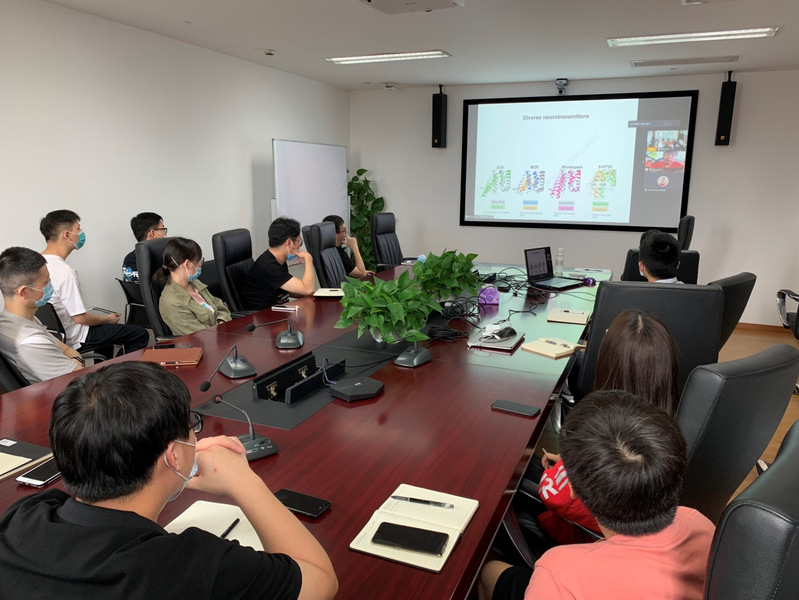At 1 pm on July 9th, Professor Li Yulong of Peking University and artificial Intelligence Nano-photonics Center of our university conducted an academic report with the theme of Application of fluorescent probe in monitoring neural signal transmission, which was presided over by postdoc Wang Yangyundou of the center.
Professor Li has made great achievements in neuroimaging and synaptic transmission. With acetylcholine fluorescent probe developed, people can study the release of dopamine and adrenaline in organisms and understand how different hormones are regulated in organisms. In the report, he first described the mechanism of action of the fluorescent probe and showed the response level of the probe to different hormones. Then he explained how the probes detect hormones in real life and how neural circuits regulate hormones.
At the end of the report, teachers and students showed great interest in the probe developed by Professor Li, and communicated and discussed related issues of the probe. Professor Li also put forward his own views on the super-resolution imaging and neurotransmitter detection. This report provides a better foundation and platform for further cooperation between the two sides.
Introduction:
Li Yulong, male, doctor, researcher of Peking University, doctoral supervisor.
Education/Work experience:
1996-2000 Bachelor's degree, College of Life Sciences, Peking University.
2000-2006 Ph.D., Department of Neurobiology, Duke University.
2006-2012 Postdoctoral fellow, Department of Molecular and Cellular Physiology, Stanford University.
2012 - Researcher, School of Life Sciences, Joint Center for Life Sciences, Peking University and Tsinghua University, McGovern Brain Research Institute, Peking University.
Research directions:
They developed efficient and genetically coded fluorescent molecular probes, studied new imaging methods, and combined them to study signal transduction at the neuronal cellular level to analyze the mechanisms of cellular excitability and synaptic transmission regulation in neural circuits. In addition, they explored possible lesions and dysfunction in the neural circuits in disease models using developed visualization methods.
